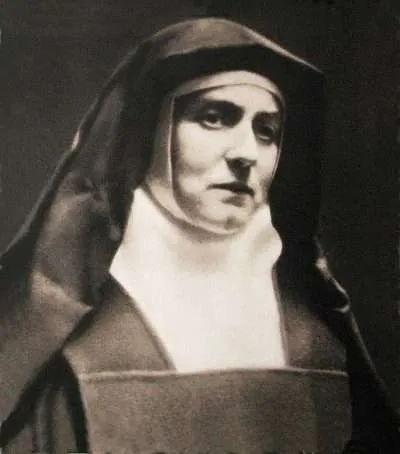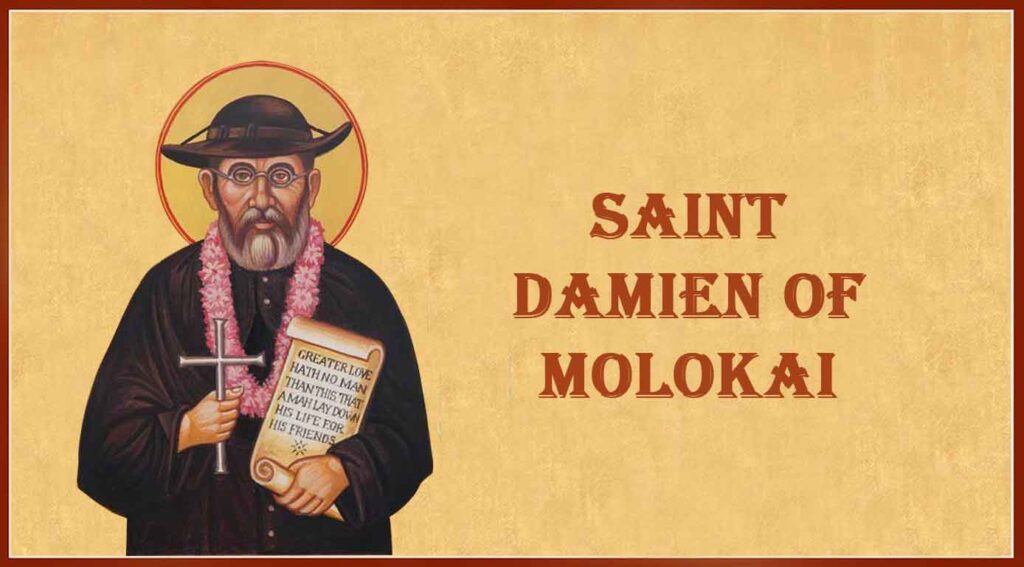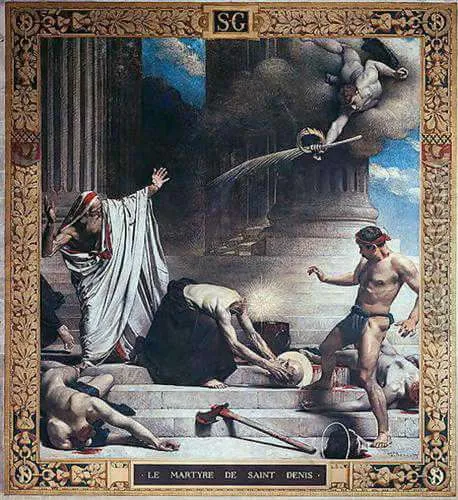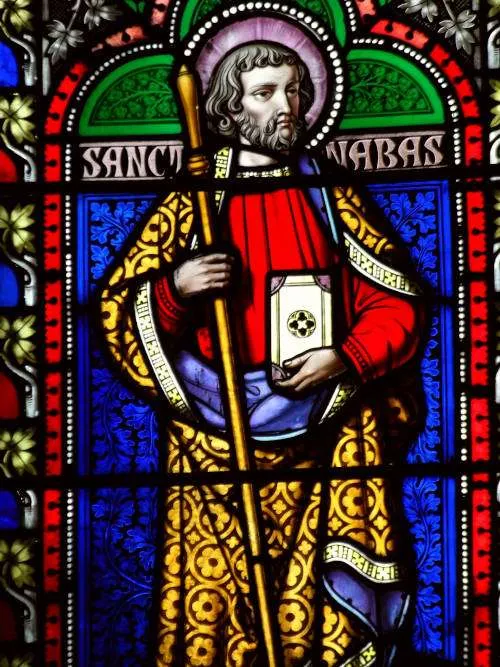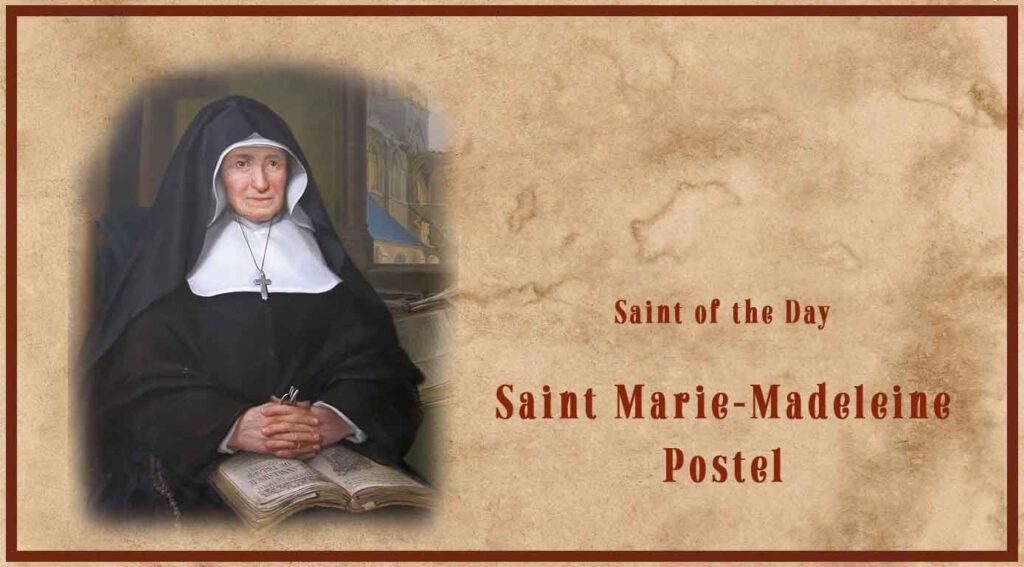1891–1942; Patron Saint of Europe; Canonized by Pope John Paul II in 1998
Edith Stein was the youngest of eleven children, eight of whom survived infancy. She was born in Breslau, Germany, the daughter of devout Jewish parents. After World War II, Breslau became part of Poland and is now named Wrocław. Edith’s father died when she was only two, so her mother raised her children as a widow but ensured that Edith received an excellent education. Although her mother was an observant Jew, Edith decided she was agnostic around the age of fourteen, breaking her mother’s heart. Edith’s decision was part of her deeper quest for truth. Edith attended the local university when she was nineteen and studied philosophy, psychology, history, and German. At the age of twenty-two, she traveled about 300 miles east to study philosophy at the University of Göttingen in Germany under the renowned professor and founder of Phenomenology, Edmund Husserl. Phenomenology is an intellectual method that seeks to offer a systematic, clear, and unbiased description of the world as it is experienced, rather than explaining it from a theoretical or abstract perspective, as is common in other philosophical approaches.
In 1914, World War I broke out, and Edith volunteered with the Red Cross, where she cared for soldiers suffering from infectious diseases. This compassionate work gave her much to reflect on during that year, and her reflections and experiences made their way into her doctoral thesis, which centered on an understanding of empathy from a phenomenological perspective. She was granted her doctorate from the University of Göttingen in 1916, at the age of twenty-five, and followed her mentor, Professor Edmund Husserl, to the University of Freiburg, where she became his teaching assistant for the next two years.
At that time in Germany, a doctoral degree was not enough to become a university professor. It was also necessary to write a habilitation, a second, post-doctorate original thesis that often includes other requirements, such as teaching courses, advising students, or giving public lectures. In 1918, Edith attempted to complete her habilitation at the University of Göttingen, but the work was rejected because women were not then permitted to go become university professors.
In 1921, during a summer vacation, Edith was visiting a friend named Hedwig Conrad-Martius in Bergzabern, Germany. Hedwig was also a phenomenologist and one of the early women pioneers in German philosophy. She had recently converted to Catholicism and had many Catholic books in her home. During her stay, Edith picked up the autobiography of Saint Teresa of Ávila and read it. After reading it, she is said to have exclaimed, “This is the truth!” Her quest for truth had led her from Judaism to agnosticism to empathetic care for the suffering soldiers, to philosophical inquiry, and finally to one of the most brilliant spiritual writers in the history of the Church. Though Saint Teresa of Ávila was not an academic like Edith, Edith knew the truth when she saw it. The truths contained in Saint Teresa’s autobiography changed Edith’s life. She left her teaching position with Professor Husserl, learned the Catholic faith, and was baptized on January 1, 1922, in the church of Saint Martin in Bergzabern, Germany. From 1923–1931, Edith taught history, philosophy, and German to girls at the Dominican convent of Saint Magdalene in Speyer, Germany. During this time, she intensified her study of Catholicism, translating portions of Saint Thomas Aquinas and other Catholic theologians and philosophers into German. In 1932, Edith became a lecturer at the Catholic Institute for Scientific Pedagogy in Münster, but this was short-lived because the Nazi government passed anti-Semitic legislation that forced her to resign. However, “We know that all things work for good for those who love God, who are called according to his purpose” (Romans 8:28), and that is exactly what happened with Edith. Out of work and oppressed by the government, in October 1933, Edith was accepted into the Discalced Carmelite Monastery of Our Lady of Peace, Lindenthal, Cologne, Germany. She took the religious name Sister Teresa Benedicta of the Cross, after Saint Teresa of Ávila and Saint John of the Cross.
As a Carmelite nun, Sister Teresa Benedicta continued her philosophical studies and writings. In Cologne, she wrote “Finite and Eternal Being,” an attempt to synthesize and harmonize the philosophies of Saint Thomas Aquinas and the phenomenology of Edmund Husserl. After Hitler came to power in 1933, life as a Jew, even a Jewish convert to Catholicism, became increasingly dangerous in Germany. In 1938, the Carmelite superiors secretly transferred Sister Teresa Benedicta and her sister Rosa (who had become an extern of the Carmelites after their mother’s death), to their monastery in Echt, Netherlands. While in Echt, Sister Teresa wrote one of her most famous books, “The Science of the Cross,” an explanation of the mystery of the Cross using the teachings of Saint John of the Cross with references to the teachings of Saint Teresa of Ávila.
In 1940, the Nazis invaded the Netherlands, and in 1942, the Dutch bishops’ conference issued a statement that was read at all Masses, condemning the Nazis and their oppression of the Jews. In retaliation, the Nazis arrested all Catholic converts from Judaism, including Sister Teresa Benedicta and her sister Rosa. On August 9, 1942, Sister Teresa and Rosa were led into the gas chambers in Auschwitz where their mortal bodies perished, but their souls triumphed over death and were welcomed into Heaven. Saint Teresa Benedicta of the Cross is considered a martyr because she died as a result of the moral clarity issued by the bishops against Nazi oppression and because she chose to remain faithful to her religious vocation, despite the evident risk.
As we honor this saint and her fascinating journey, ponder her pursuit of the truth. She walked away from her Jewish roots at an early age and studied philosophy as a way of seeking the truth. She experienced human compassion during World War I while caring for soldiers, which fueled her phenomenological reflections of human empathy. She rigorously studied philosophy as a way of making sense of life, earning her doctorate. She remained humble and open to the truth while reading the life experience of Saint Teresa of Ávila, which led to her conversion. She pursued ongoing study of the truth as a Catholic theologian and philosopher. She made the radical choice to enter Carmel and become a nun. She experienced the suffering of the Cross firsthand during the Nazi oppression of World War II. Through it all, she used her keen intellect to develop a profound theology of the Cross, using the writings of Saint John of the Cross and Saint Teresa of Ávila. Finally, she lived the ultimate suffering through her martyrdom with fellow Jewish converts to the faith in Auschwitz. Above all, her story is a witness to the pursuit of the deepest truths found in the suffering and death of Christ. Allow this witness of her intellectual and lived experience of Christ’s Cross to inspire you to turn more fully to the sacrificial life to which you are called.
Source: https://mycatholic.life/saints/saints-of-the-liturgical-year/august-9—saint-teresa-benedicta-of-the-cross-edith-stein-virgin-and-martyr/


